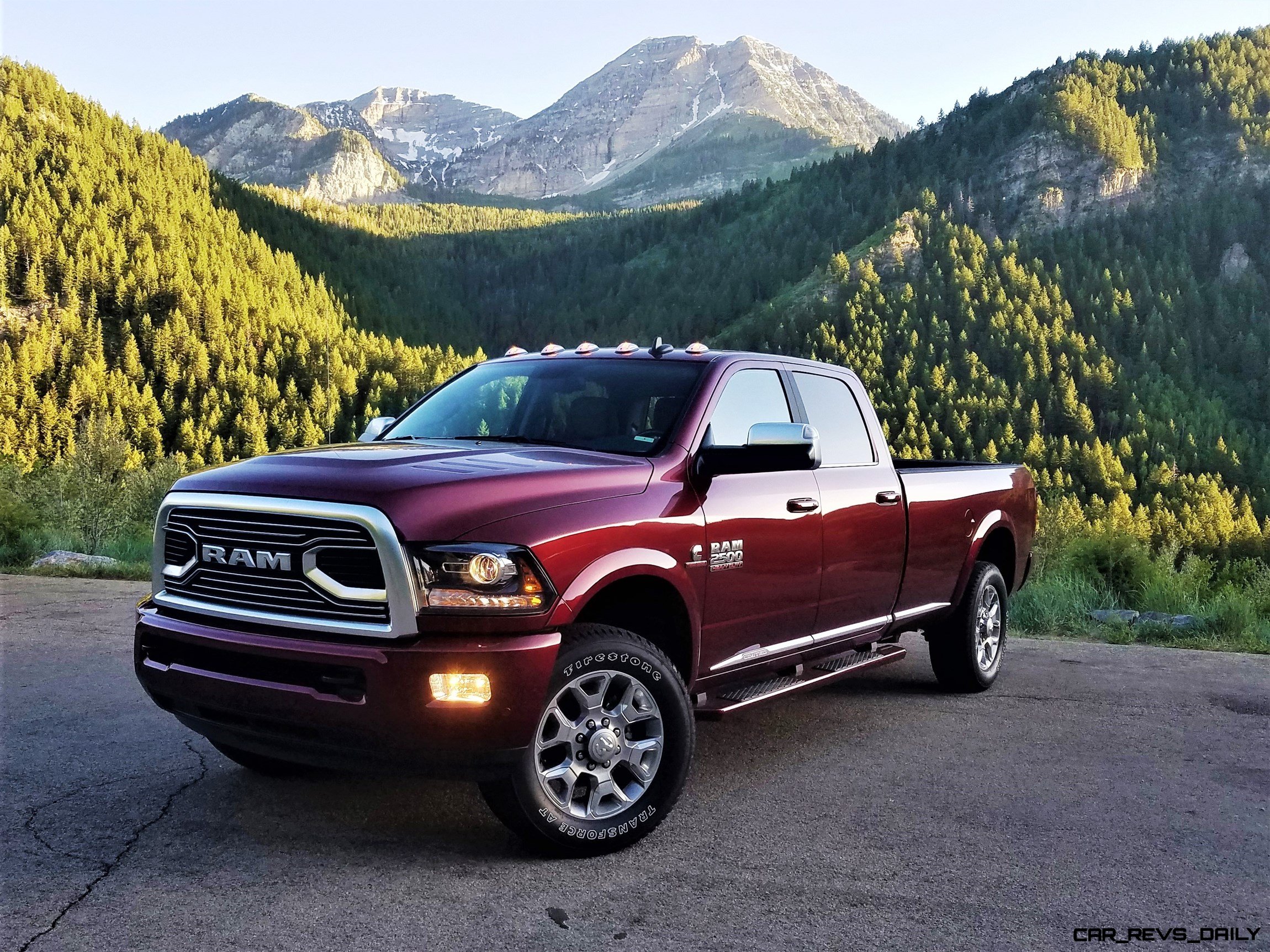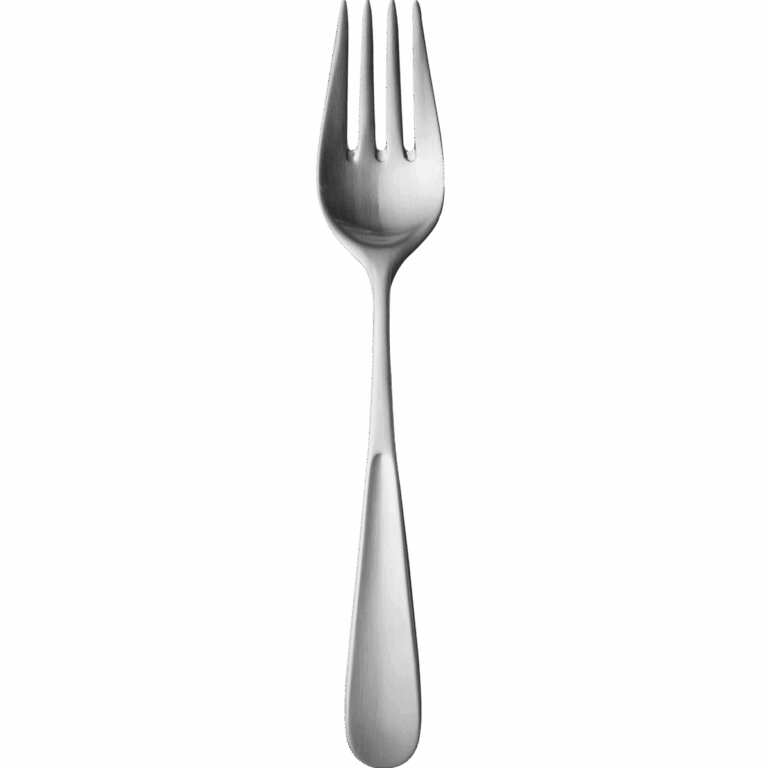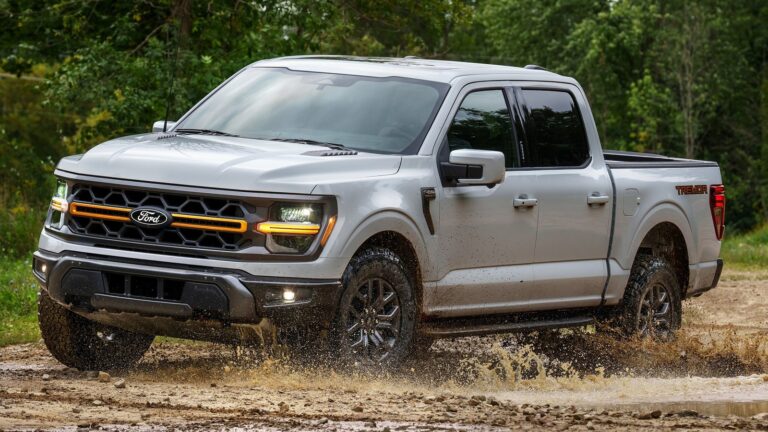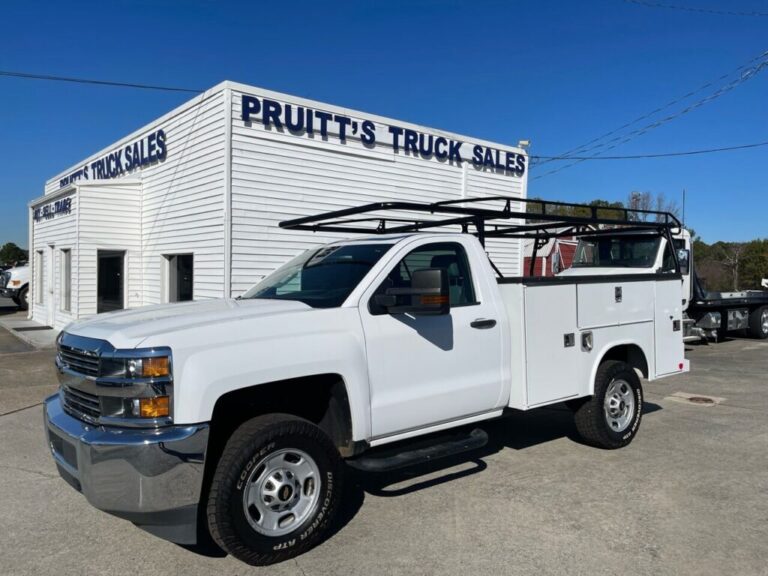2500 Heavy Duty Trucks For Sale: Your Comprehensive Guide to Power and Performance
2500 Heavy Duty Trucks For Sale: Your Comprehensive Guide to Power and Performance cars.truckstrend.com
In the world of work and recreation, few vehicles command as much respect and capability as the heavy-duty truck. Among these formidable machines, the "2500" series holds a unique and highly sought-after position. When you see "2500 Heavy Duty Trucks For Sale," you’re looking at a class of vehicles engineered to bridge the gap between everyday utility and serious vocational demands. These aren’t just larger versions of their half-ton counterparts; they are purpose-built powerhouses designed for substantial towing, immense payload, and relentless durability.
This comprehensive guide will delve into everything you need to know about 2500 heavy-duty trucks, from understanding their core capabilities to navigating the buying process and ensuring their long-term performance. Whether you’re a contractor needing a reliable workhorse, a farmer hauling equipment, or an RV enthusiast looking to tow your dream home on wheels, a 2500 heavy-duty truck might just be the perfect solution.
2500 Heavy Duty Trucks For Sale: Your Comprehensive Guide to Power and Performance
Understanding the "2500" Designation: What Does it Mean for Heavy Duty Trucks?
The "2500" designation, commonly seen in models like the Ford F-250, Ram 2500, and Chevrolet Silverado 2500HD/GMC Sierra 2500HD, refers to what is colloquially known as a "3/4-ton" pickup truck. This classification is primarily based on the truck’s Gross Vehicle Weight Rating (GVWR), which is the maximum permissible weight of the vehicle itself, plus its passengers, cargo, and any accessories. While the "3/4-ton" (or 1,500 lbs) payload capacity is a historical reference, modern 2500 trucks often boast significantly higher payload capacities, often exceeding 3,000 to 4,000 pounds, and towing capacities ranging from 15,000 to over 20,000 pounds, depending on the configuration.
Compared to their 1500 (half-ton) siblings, 2500 trucks feature beefier frames, stronger suspension components, larger brakes, and often more powerful engine options, particularly heavy-duty diesel variants. This enhanced construction allows them to handle heavier loads and more strenuous tasks with greater stability and less strain on the vehicle. They sit squarely between the lighter-duty 1500 series and the even more robust 3500 (one-ton) trucks, offering a compelling balance of capability without the potentially higher cost or less maneuverable footprint of a full one-ton.
Key Applications and Industries Benefiting from 2500 Heavy Duty Trucks
The versatility of 2500 heavy-duty trucks makes them indispensable across a wide array of industries and personal uses. Their robust design allows them to excel in demanding environments where lesser trucks would falter.
- Construction & Trades: From hauling lumber, tools, and heavy equipment to pulling large utility trailers, 2500 trucks are a staple on construction sites. Plumbers, electricians, landscapers, and general contractors rely on their payload and towing prowess daily.
- Agriculture: Farmers use these trucks to transport feed, tools, small implements, and livestock trailers, navigating challenging terrain with ease.
- Recreational Towing: For enthusiasts with large travel trailers, fifth-wheel RVs, or substantial boat trailers, a 2500 truck provides the necessary stability, power, and braking capability for safe and comfortable long-distance travel.
- Small Business & Fleet Operations: Many businesses, from delivery services to mobile repair units, choose 2500 trucks for their durability, cargo capacity, and ability to handle specialized upfits like utility bodies or service beds.
- Personal Use: Even for individuals, a 2500 truck can be an excellent choice if frequent large-scale hauling or towing is part of their lifestyle, offering peace of mind and ample power reserves.

Top Features to Look For When Buying a 2500 Heavy Duty Truck

When exploring 2500 heavy-duty trucks for sale, understanding the key features and configurations is crucial to finding the right fit for your specific needs.
- Engine Options: This is often the most critical decision.
- Gasoline V8: Typically offers a lower initial cost and simpler maintenance. Modern gas engines in 2500 trucks are powerful enough for most conventional towing and hauling tasks, providing good everyday driveability.
- Diesel (Turbo-Diesel I6/V8): The preferred choice for maximum towing and hauling. Diesel engines offer significantly more torque, better fuel economy when under load, and often a longer lifespan. They come with a higher upfront cost and more complex maintenance (e.g., Diesel Exhaust Fluid – DEF, specialized filters), but their unmatched capability makes them invaluable for heavy-duty work.

- Towing Capacity: Differentiate between conventional hitch towing and fifth-wheel/gooseneck towing. Fifth-wheel/gooseneck setups offer superior stability and higher weight ratings, essential for large RVs or heavy equipment trailers. Ensure the truck’s listed capacity exceeds your maximum anticipated load with a healthy buffer.
- Payload Capacity: This refers to the maximum weight the truck can carry in its bed and cab. Consider the weight of your tools, cargo, passengers, and even a heavy truck camper.
- Drivetrain (2WD vs. 4WD):
- 2WD: Generally less expensive, slightly better fuel economy, and higher payload/towing capacities due to less weight. Suitable for paved roads or light-duty work.
- 4WD: Essential for off-road conditions, snow, mud, or unpaved job sites. Adds complexity, weight, and cost but significantly enhances traction and versatility.
- Cab Configurations:
- Regular Cab: Two doors, minimal rear space. Best for pure work trucks where maximum bed length or a shorter wheelbase is desired.
- Extended/Quad Cab: Two full-size front doors and two smaller rear doors, with limited rear seating. Offers some interior storage or occasional passenger space.
- Crew Cab: Four full-size doors, ample rear legroom. Ideal for carrying a work crew or family comfortably.
- Bed Lengths: Common options are short (around 6.5 ft) and long (around 8 ft). A long bed is often preferred for full sheets of plywood, larger toolboxes, or certain fifth-wheel hitches.
- Technology & Safety Features: Modern 2500 trucks offer advanced infotainment systems, trailer brake controllers, integrated trailer cameras, blind-spot monitoring, lane-keeping assist, and more, enhancing both convenience and safety.
- Trim Levels: From basic work truck trims to luxurious high-end models, trim levels significantly impact features, comfort, and price. Match the trim to your budget and desired amenities.
The Buying Process: Navigating the Market for 2500 Heavy Duty Trucks
Acquiring a 2500 heavy-duty truck is a significant investment. A well-thought-out approach will ensure you get the best value and the right truck for your needs.
- Define Your Needs: Before you even look at trucks, clearly outline your primary use. What will you be towing? How much payload do you need? What kind of terrain will you traverse? This clarity will narrow down your options significantly.
- New vs. Used:
- New: Offers the latest technology, full warranty, customization options, and often attractive financing. Higher upfront cost and immediate depreciation.
- Used: Significant cost savings, slower depreciation. Requires more diligent research into maintenance history and condition.
- Where to Buy:
- Dealerships (New & Used): Offer a wide selection, financing, and often certified pre-owned options with warranties. Can be pricier.
- Online Marketplaces (e.g., AutoTrader, CarGurus, Facebook Marketplace): Vast selection, competitive pricing. Requires more caution and due diligence.
- Auctions: Potentially great deals but "as-is" sales carry higher risk. Best for experienced buyers.
- Private Sellers: Can offer good value but require thorough inspection and verification of title/history.
- Research & Comparison: Compare models from different manufacturers (Ford, Ram, Chevy, GMC). Read reviews, watch video comparisons, and check reliability ratings.
- Inspect Thoroughly:
- For Used Trucks: Always get a pre-purchase inspection (PPI) by an independent mechanic specializing in heavy-duty trucks, especially if considering a diesel. Check for rust, frame damage, signs of neglect, and proper function of all systems.
- For New Trucks: Even new trucks should be inspected for any transport damage or factory defects before taking delivery.
- Test Drive: Drive the truck empty and, if possible, with a load similar to what you’ll be hauling. Pay attention to engine performance, transmission shifts, braking, steering feel, and overall comfort. Test all features.
- Financing: Explore your financing options well in advance. Get pre-approved by your bank or credit union to compare with dealership offers.
- Negotiate: Don’t be afraid to negotiate the price, especially on used trucks. Research market values to understand a fair price range.
Maintenance and Longevity: Keeping Your 2500 Heavy Duty Truck Running Strong
A 2500 heavy-duty truck is built to last, but proper maintenance is key to maximizing its lifespan and reliability, especially when it’s constantly working hard.
- Follow Manufacturer’s Schedule: Adhere strictly to the recommended service intervals for oil changes, fluid checks (transmission, differential, coolant, brake fluid), and filter replacements (oil, air, fuel, cabin). Diesel trucks have specific fuel filter and DEF system maintenance.
- Tire Care: Heavy-duty trucks carry significant weight. Regularly check tire pressure (critical for safety and fuel economy), rotate tires, and monitor tread wear.
- Brake System: Due to heavy loads, brake components (pads, rotors, calipers) experience more wear. Inspect them regularly and replace as needed.
- Transmission & Drivetrain: If you frequently tow or haul heavy loads, consider more frequent transmission fluid and filter changes. Inspect universal joints, driveshafts, and differentials for wear.
- Cooling System: Ensure the cooling system is in top condition, especially if you tow in hot climates. Overheating can lead to costly engine damage.
- Trailer Systems: Regularly inspect trailer wiring, brake controllers, and hitch components.
- Rust Prevention: Especially in areas with harsh winters, consider undercoating or regular washing to prevent rust on the frame and body.
By being proactive with maintenance, you’ll not only extend the life of your 2500 heavy-duty truck but also ensure it remains a safe and reliable partner for all your demanding tasks.
Price Table: Estimated Costs for 2500 Heavy Duty Trucks For Sale
Please note that prices for 2500 heavy-duty trucks can vary wildly based on make, model, year, mileage, condition, trim level, engine type, and regional market demand. The table below provides estimated price ranges for popular models as of mid-2024. These are general guidelines and should not be taken as exact quotes.
| Make/Model (Example) | Condition | Estimated Price Range (USD) | Key Features/Notes |
| :——————- | :——– | :————————- | :————————————————————————————————————————————————————————————————————————————————————————————————————————————————————————————————————————————————————————————————————————————————————————————————————————————————————————————————————————————————————————————————————————————————————————————————————————————————————————————————————————————————————————————————————————————————————————————————————————————————————————————————————————————————————————————————————————————————————————————————————————————————————————————————————————————————————————————————————————————————————————————————————————————————————————————————————————————————————————————————————————————————————————————————————————————————————————————————————————————————————————————————————————————————————————————————————————————————————————————————————————————————————————————————————————————————————————————————————————————————————————————————————————————————————————————————————————————————————————————————————————————————————————————————————————————————————————————————————————————————————————————————————————————————————————————————————————————————————————————————————————————————————————————————————————————————————————————————————————————————————————————————————————————————————————————————————————————————————————————————————————————————————————————————————————————————————————————————————————————————————————————————————————————————————————————————————————————————————————————————————————————————————————————————————————————————————————————————————————————————————————————————————————————————————————————————————————————————————————————————————————————————————————————————————————————————————————————————————————————————————————————————————————————————————————————————————————————————————————————————————————————————————————————————————————————————————————————————————————————————————————————————————————————————————————————————————————————————————————————————————————————————————————————————————————————————————————————————————————————————————————————————————————————————————————————————————————————————————————————————————————————————————————————————————————————————————————————————————————————————————————————————————————————————————————————————————————————————————————————————————————————————————————————————————————————————————————————————————————————————————————————————————————————————————————————————————————————————————————————————————————————————————————————————————————————————————————————————————————————————————————————————————————————————————————————————————————————————————————————————————————————————————————————————————————————————————————————————————————————————————————————————————————————————————————————————————————————————————————————————————————————————————————————————————————————————————————————————————————————————————————————————————————————————————————————————————————————————————————————————————————————————————————————————————————————————————————————————————————————————————————————————————————————————————————————————————————————————————————————————————————————————————————————————————————————————————————————————————————————————————————————————————————————————————————————————————————————————————————————————————————————————————————————————————————————————————————————————————————————————————————————————————————————————————————————————————————————————————————————————————————————————————————————————————————————————————————————————————————————————————————————————————————————————————————————————————————————————————————————————————————————————————————————————————————————————————————————————————————————————————————————————————————————————————————————————————————————————————————————————————————————————————————————————————————————————————————————————————————————————————————————————————————————————————————————————————————————————————————————————————————————————————————————————————————————————————————————————————————————————————————————————————————————————————————————————————————————————————————————————————————————————————————————————————————————————————————————————————————————————————————————————————————————————————————————————————————————————————————————————————————————————————————————————————————————————————————————————————————————————————————————————————————————————————————————————————————————————————————————————————————————————————————————————————————————————————————————————————————————————————————————————————————————————————————————————————————————————————————————————————————————————————————————————————————————————————————————————————————————————————————————————————————————————————————————————————————————————————————————————————————————————————————————————————————————————————————————————————————————————————————————————————————————————————————————————————————————————————————————————————————————————————————————————————————————————————————————————————————————————————————————————————————————————————————————————————————————————————————————————————————————————————————————————————————————————————————————————————————————————————————————————————————————————————————————————————————————————————————————————————————————————————————————————————————————————————————————————————————————————————————————————————————————————————————————————————————————————————————————————————————————————————————————————————————————————————————————————————————————————————————————————————————————————————————————————————————————————————————————————————————————————————————————————————————————————————————————————————————————————————————————————————————————————————————————————————————————————————————————————————————————————————————————————————————————————————————————————————————————————————————————————————————————————————————————————————————————————————————————————————————————————————————————————————————————————————————————————————————————————————————————————————————————————————————————————————————————————————————————————————————————————————————————————————————————————————————————————————————————————————————————————————————————————————————————————————————————————————————————————————————————————————————————————————————————————————————————————————————————————————————————————————————————————————————————————————————————————————————————————————————————————————————————————————————————————————————————————————————————————————————————————————————————————————————————————————————————————————————————————————————————————————————————————————————————————————————————————————————————————————————————————————————————————————————————————————————————————————————————————————————————————————————————————————————————————————————————————————————————————————————————————————————————————————————————————————————————————————————————————————————————————————————————————————————————————————————————————————————————————————————————————————————————————————————————————————————————————————————————————————————————————————————————————————————————————————————————————————————————————————————————————————————————————————————————————————————————————————————————————————————————————————————————————————————————————————————————————————————————————————————————————————————————————————————————————————————————————————————————————————————————————————————————————————————————————————————————————————————————————————————————————————————————————————————————————————————————————————————————————————————————————————————————————————————————————————————————————————————————————————————————————————————————————————————————————————————————————————————————————————————————————————————————————————————————————————————————————————————————————————————————————————————————————————————————————————————————————————————————————————————————————————————————————————————————————————————————————————————————————————————————————————————————————————————————————————————————————————————————————————————————————————————————————————————————————————————————————————————————————————————————————————————————————————————————————————————————————————————————————————————————————————————————————————————————————————————————————————————————————————————————————————————————————————————————————————————————————————————————————————————————————————————————————————————————————————————————————————————————————————————————————————————————————————————————————————————————————————————————————————————————————————————————————————————————————————————————————————————————————————————————————————————————————————————————————————————————————————————————————————————————————————————————————————————————————————————————————————————————————————————————————————————————————————————————————————————————————————————————————————————————————————————————————————————————————————————————————————————————————————————————————————————————————————————————————————————————————————————————————————————————————————————————————————————————————————————————————————————————————————————————————————————————————————————————————————————————————————————————————————————————————————————————————————————————————————————————————————————————————————————————————————————————————————————————————————————————————————————————————————————————————————————————————————————————————————————————————————————————————————————————————————————————————————————————————————————————————————————————————————————————————————————————————————————————————————————————————————————————————————————————————————————————————————————————————————————————————————————————————————————————————————————————————————————————————————————————————————————————————————————————————————————————————————————————————————————————————————————————————————————————————————————————————————————————————————————————————————————————————————————————————————————————————————————————————————————————————————————————————————————————————————————————————————————————————————————————————————————————————————————————————————————————————————————————————————————————————————————————————————————————————————————————————————————————————————————————————————————————————————————————————————————————————————————————————————————————————————————————————————————————————————————————————————————————————————————————————————————————————————————————————————————————————————————————————————————————————————————————————————————————————————————————————————————————————————————————————————————————————————————————————————————————————————————————————————————————————————————————————————————————————————————————————————————————————————————————————————————————————————————————————————————————————————————————————————————————————————————————————————————————————————————————————————————————————————————————————————————————————————————————————————————————————————————————————————————————————————————————————————————————————————————————————————————————————————————————————————————————————————————————————————————————————————————————————————————————————————————————————————————————————————————————————————————————————————————————————————————————————————————————————————————————————————————————————————————————————————————————————————————————————————————————————————————————————————————————————————————————————————————————————————————————————————————————————————————————————————————————————————————————————————————————————————————————————————————————————————————————————————————————————————————————————————————————————————————————————————————————————————————————————————————————————————————————————————————————————————————————————————————————————————————————————————————————————————————————————————————————————————————————————————————————————————————————————————————————————————————————————————————————————————————————————————————————————————————————————————————————————————————————————————————————————————————————————————————————————————————————————————————————————————————————————————————————————————————————————————————————————————————————————————————————————————————————————————————————————————————————————————————————————————————————————————————————————————————————————————————————————————————————————————————————————————————————————————————————————————————————————————————————————————————————————————————————————————————————————————————————————————————————————————————————————————————————————————————————————————————————————————————————————————————————————————————————————————————————————————————————————————————————————————————————————————————————————————————————————————————————————————————————————————————————————————————————————————————————————————————————————————————————————————————————————————————————————————————————————————————————————————————————————————————————————————————————————————————————————————————————————————————————————————————————————————————————————————————————————————————————————————————————————————————————————————————————————————————————————————————————————————————————————————————————————————————————————————————————————————————————————————————————————————————————————————————————————————————————————————————————————————————————————————————————————————————————————————————————————————————————————————————————————————————————————————————————————————————————————————————————————————————————————————————————————————————————————————————————————————————————————————————————————————————————————————————————————————————————————————————————————————————————————————————————————————————————————————————————————————————————————————————————————————————————————————————————————————————————————————————————————————————————————————————————————————————————————————————————————————————————————————————————————————————————————————————————————————————————————————————————————————————————————————————————————————————————————————————————————————————————————————————————————————————————————————————————————————————————————————————————————————————————————————————————————2500 Heavy Duty Trucks For Sale: The Ultimate Guide to Power and Purpose
The market for heavy-duty trucks is robust, driven by a diverse array of industries and individual needs that demand capabilities far beyond standard consumer pickups. Among these behemoths, the "2500" series stands out as a sweet spot, offering an impressive blend of formidable power, significant payload, and substantial towing capacity, all while often maintaining a slightly more manageable footprint than their larger 3500-series siblings. When you see "2500 Heavy Duty Trucks For Sale," you’re looking at a segment ripe with opportunities for businesses and individuals seeking a true workhorse.
This comprehensive guide will navigate the world of 2500 heavy-duty trucks, providing insights into their unique characteristics, ideal applications, essential features, the buying process, and critical maintenance considerations. Our goal is to empower you with the knowledge needed to make an informed decision, ensuring your next heavy-duty truck perfectly aligns with your demands.
Understanding the 2500 Designation: What Makes It "Heavy Duty"?
The "2500" designation, prominently featured across manufacturers like Ford (F-250), Ram (2500), and General Motors (Chevrolet Silverado 2500HD, GMC Sierra 2500HD), refers to what is colloquially known as a "3/4-ton" pickup truck. While the "3/4-ton" (or 1,500 lbs) payload capacity is a historical benchmark, modern 2500 series trucks far exceed this, boasting payload capacities typically ranging from 3,000 to over 4,000 pounds, and conventional towing capacities stretching from 15,000 pounds to upwards of 20,000 pounds when properly equipped.
What truly makes a 2500 truck "heavy duty" lies beneath its skin. These vehicles are engineered with:
- Robust Frames: Thicker, stronger, and often fully-boxed frames capable of handling immense stress.
- Heavy-Duty Suspension Systems: Stiffer springs, larger shock absorbers, and more robust axles designed to support significant weight without bottoming out or compromising stability.
- Enhanced Braking Systems: Larger brake rotors and calipers, sometimes with advanced trailer brake integration, to safely stop heavier loads.
- Powerful Drivetrains: Often paired with heavy-duty automatic transmissions and larger, more durable differentials.
- Engine Options: A key differentiator, with most 2500 trucks offering potent gasoline V8s and incredibly torquey turbo-diesel engines built for continuous heavy work.
This combination of reinforced components allows 2500 trucks to handle tasks that would quickly overwhelm a lighter 1500 (half-ton) series truck, making them the preferred choice for serious hauling and towing.
Who Needs a 2500 Heavy Duty Truck? Ideal Applications
The versatility and sheer capability of 2500 heavy-duty trucks make them indispensable across a wide spectrum of users and industries. Their ability to manage substantial weight and power makes them a cornerstone for:
- Construction and Trades: Plumbers, electricians, carpenters, roofers, and general contractors frequently utilize 2500 trucks to transport tools, materials, and pull heavy equipment trailers (e.g., excavators, skid steers).
- Agriculture and Farming: Hauling livestock trailers, feed, implements, and supplies across diverse terrain, often requiring four-wheel drive capabilities.
- Recreational Vehicle (RV) Enthusiasts: The 2500 series is a popular choice for towing large travel trailers, fifth-wheel campers, or multi-toy haulers, providing the necessary stability and power for long journeys.
- Landscaping and Property Maintenance: Transporting heavy loads of mulch, rock, topsoil, and pulling chippers or equipment trailers.
- Boating and Marine: Launching and retrieving large boats, and towing them long distances.
- Small Businesses and Fleets: Ideal for mobile service units, delivery services, and businesses that require robust transport for goods or equipment.
- Overlanders and Off-Road Enthusiasts: While not traditionally thought of as off-roaders, many 2500 trucks, especially with 4WD, are built ruggedly enough to handle severe terrain, particularly when outfitted with heavy gear or truck campers.
If your daily or frequent activities involve towing more than 10,000 pounds or hauling more than 2,000 pounds, a 2500 heavy-duty truck moves from a luxury to a necessity.
Key Features and Specifications to Prioritize
When you’re sifting through "2500 Heavy Duty Trucks For Sale," understanding the nuances of available features is paramount to making the right choice.
- Engine Choice (Gas vs. Diesel):
- Gasoline V8: Typically offers a lower purchase price, simpler maintenance, and quicker warm-up times. Modern gas engines deliver ample power for many heavy tasks and are often preferred for shorter hauls or lighter duty cycles.
- Turbo-Diesel: The king of towing and hauling. Diesels provide significantly higher torque (especially at low RPMs), better fuel economy when under load, and often a longer service life. They come with a higher upfront cost, more complex emissions systems (requiring Diesel Exhaust Fluid – DEF), and potentially higher maintenance costs, but their unmatched pulling power makes them indispensable for extreme demands.
- Towing and Payload Capacities: These are the most critical numbers. Don’t just look at the maximum; consider your specific needs.
- Conventional Towing: For bumper-pull trailers.
- Fifth-Wheel/Gooseneck Towing: For trailers that mount in the bed, offering superior stability and higher weight ratings. Ensure the truck’s capacity safely exceeds your maximum anticipated load, factoring in the weight of passengers and cargo in the truck itself.
- Drivetrain (2WD vs. 4WD):
- 2WD: More affordable, slightly better fuel economy, and often a higher max payload due to less weight. Ideal for primarily paved roads.
- 4WD: Essential for off-road conditions, snow, mud, or unpaved job sites. Adds significant traction and versatility but also cost and weight.
- Cab Configuration:
- Regular Cab: Two doors, single row of seating. Best for pure work trucks where maximum bed length and a compact footprint are priorities.
- Extended/Double Cab: Two full-size front doors, two smaller rear doors. Offers limited rear seating and some interior storage.
- Crew Cab: Four full-size doors, spacious rear seating. Ideal for carrying a work crew or family comfortably.
- Bed Length: Commonly 6.5-foot (short box) or 8-foot (long box). Long beds are often preferred for hauling full sheets of plywood, ATVs, or accommodating specific fifth-wheel hitches.
- Axle Ratio: A lower (numerically higher) axle ratio (e.g., 3.73, 4.10) provides more torque for towing but can slightly reduce fuel economy when unloaded. Match this to your primary use.
- Advanced Technology and Safety: Modern 2500 trucks offer integrated trailer brake controllers, trailer sway control, multiple camera systems (including bed view and surround view), blind-spot monitoring, lane-keeping assist, adaptive cruise control, and more. These features enhance safety, convenience, and confidence, especially when towing.
- Trim Levels: From basic "work truck" trims with vinyl seats to luxurious "Laram






